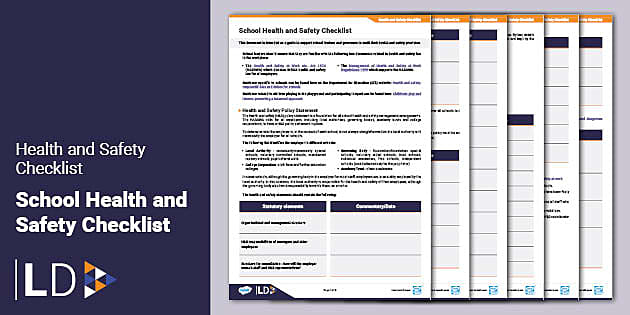
Researchers believe that 20-30% of life expectancy can be attributed to genetics, while the rest are a result of lifestyle choices and genes. However, the length of life of the average person hasn't changed much in the past few decades, despite the fact that the number of years that people live is increasing. There are many factors that can influence a person’s life expectancy. It is important to eat a healthy diet and exercise regularly.
Although genetics research is still in its infancy, it has been shown that increased longevity can be linked to nutritional needs. This study revealed that 25 percent variance in human lifespan is genetic and that many genes play a role in aging. Three genes have been identified as being linked to longevity. These genes are the APOE gene and FOXO3 genetics. These genes don't appear play a significant role in determining one’s life expectancy but are known to work together.

The average American life expectancy is around 80-80 years. Asian-Americans, by contrast, average almost one hundred years longer. Black Americans have shorter lifespans and tend to be less healthy. White men also have higher rates for cancer, heart disease, diabetes and heart disease than their black counterparts. Women live longer than men, however. Although theories are abound about why women live longer, most experts agree that it is due to their better health and the less physical activity they engage in.
Lifestyle factors play an important role in determining life expectancy. While the determinants of longevity may not be genetic. The environment a person lives in, the food they eat, and the amount of physical activity he or she engages in all their daily activities all have a strong influence. Lifestyle plays a larger role than genetics in determining the life expectancy. As they get older, they become more likely to be in good health and to avoid many age-related illnesses.
Environment, genetics, and lifestyle all play a role in the length of one's life expectancy. People who live longer are more healthy than others. It is their parents' lifestyle and the environment that determine how long they live. People living in poverty can have a direct impact on their longevity. While these factors can be important, they don't always cause longevity. You can extend your life span by eating healthy foods. People who eat more fresh fruits and vegetables are also more likely live longer.

Scientists have researched people who live to their nineties, and even into their nineties. They have the same lifestyles as those who live in their nineties and thirties. They don't smoke, they're not overweight, and they have no medical conditions. However, they are more likely to be non-smokers. They are also good at managing stress. They are more likely to be older and female. You should also note that older adults with good health tend to live longer than their peers.
FAQ
What's a good routine for a daily workout?
Regular exercise is essential to staying fit. It doesn't make a difference what kind of activity you choose. As long as you do it often, it will be beneficial. The most important thing is consistency. You must be consistent if you are to see results.
Start by doing small amounts of daily physical activity (like walking). Then gradually increase the time spent exercising until you spend 30 minutes a day working out. This could include running, cycling, swimming, weight training, yoga, or aerobics classes.
It is important to exercise every day of the week. Don't skip any sessions unless you have a valid reason for not attending.
Wear appropriate clothing and footwear when exercising outdoors. It is important to take into account the weather conditions, and how they may affect your ability to exercise safely.
While exercising, make sure to drink plenty water. It is best to avoid alcohol while you're exercising. Also, don't drink caffeine-rich beverages like tea, coffee, or cola. They can give you energy, but will also dehydrate.
It's common to feel tired after your first workout. You'll feel more energetic and refreshed if you keep going with your exercise program.
What is the best way to increase muscle mass?
There are two main things you must do when building muscle mass. These are called compound movements and isolation. While isolation exercises focus on specific muscles, compound moves target multiple muscle groups simultaneously.
You can improve your workouts by choosing exercises that challenge all major muscle groups. This ensures that each session is challenging.
MyFitnessPal, an app that tracks your actions, can be used to help you keep track. You can log everything, from calories burned to weight lifting. You can even create customized meal plans that are based on your goals.
Which exercise is the best for men?
It depends on what you're looking for. Cardio workouts are great if you're looking to lose weight. They burn calories much faster than strength-training exercises.
Strength training, on the other hand, is better if you are looking to increase muscle mass.
Both types are good for improving your overall health.
If you're looking to get fit fast, I recommend doing HIIT or sprint interval training. This type of training can help you lose fat quickly and increase your metabolism. It increases your endurance so you can continue training even when tired.
Do you allow me to go to the fitness center 7 days a semaine?
You can go to your gym seven days a semaine, but not simultaneously. This means you need to choose a time when you feel rested and not too tired.
This will help you remain motivated and have more energy to do other activities.
Also, ensure you eat healthy during these times. This will help you not feel tired or slow at the gym.
Last, you must make sure that there isn’t another thing competing for your attention. You might want to avoid working out on school nights if you have kids. They can distract you from your exercise routine.
How to Lose Belly Fat Fast
There are several ways to reduce belly fat fast. You can reduce your intake of food and drink more water.
Another way to increase metabolism is to run and swim.
To quickly reduce belly fat, avoid sitting too much. Stand up often throughout the day. This will help to burn more calories.
If you've tried all the methods and are still struggling with belly fat, there's another option.
This involves using a device called a belt. When you sit down, the belt tightens around your waist.
This will make you feel uncomfortable and allow you to move about. This will make you lose more calories and help you reduce your belly fat.
Is Yoga Beneficial?
Yoga has been popular since ancient times. Yoga is now very fashionable among celebrities and everyday people who want to look and feel good.
Yoga is great because it stretches your muscles while strengthening them. It calms you down and relaxes you.
The primary difference between yoga and other forms is the focus on breathing techniques in yoga.
For balance and flexibility, there are many poses you can do.
Statistics
- According to the American Academy of Dermatology (AAD), men over 50 are at a heightened risk of developing it. (healthline.com)
- An estimated calorie range for moderately active adult males falls between 2,200 to 2,800 calories per day, depending on age. (eatright.org)
- 10 pounds in a month is likely during a lean bulking phase, especially for beginners. (muscleandstrength.com)
- By John Thompson Take a whopping 38% off a set of PowerBlock Pros. (menshealth.com)
- Get free shipping and 25% off today. (healthline.com)
External Links
How To
How can a man lose weight in just 30 days.
The best way to achieve fitness goals is by breaking them into small achievable steps.
Each day you need to be working towards your goal. This could mean anything from doing 10 pushups for 5 minutes to running 3km.
Consistently doing this will lead to positive results.
The key thing here is consistency. You have to keep at it until you succeed!
What is the difference between Aerobic Fitness (or Anaerobic Fitness)?
Anaerobic fitness describes the body's ability not to use oxygen to perform intense physical tasks. Anaerobic pathways provide sufficient energy for high-intensity exercise. Anaerobic pathways are glycolysis, creatinephosphate and the phosphagen.
Aerobic fitness, however, refers to the continuous practice of low-intensity aerobic exercise. When performing aerobic exercises oxygen is used to fuel the cells. In other words: The aerobic pathway gives more energy than that of the anaerobic.
If you are looking to run a full marathon, then you have to increase your aerobic ability. If you only focus on building up your anaerobic capacity, you won't be able to finish the race.
Aerobic fitness is also referred to as cardiovascular fitness. The two most common methods of measuring cardiovascular fitness are VO2 max testing and step tests.
VO2 Max Testing
The body's maximum oxygen consumption during exercise is called the VO2 Max. This test measures the amount O2 that the body can use when exercising.
This test measures cardiovascular fitness in a way that is most accurate. However, it requires expensive equipment and highly trained professionals to administer the test.
Step Tests
Step tests are a simple but effective way to measure cardiovascular fitness. You will be asked to walk, jog or run for a specific time on a track. This is based on your age or weight.
These tests can be conducted almost anywhere and are cheap, simple, and easy. For example, you could walk on a treadmill 20 minutes and then stop. Throughout the session, your heart rate should be within a certain range.
This method is called the Bruce Protocol. Bruce, himself a runner developed this protocol when he realized his heart rate didn't rise when he ran long distances.